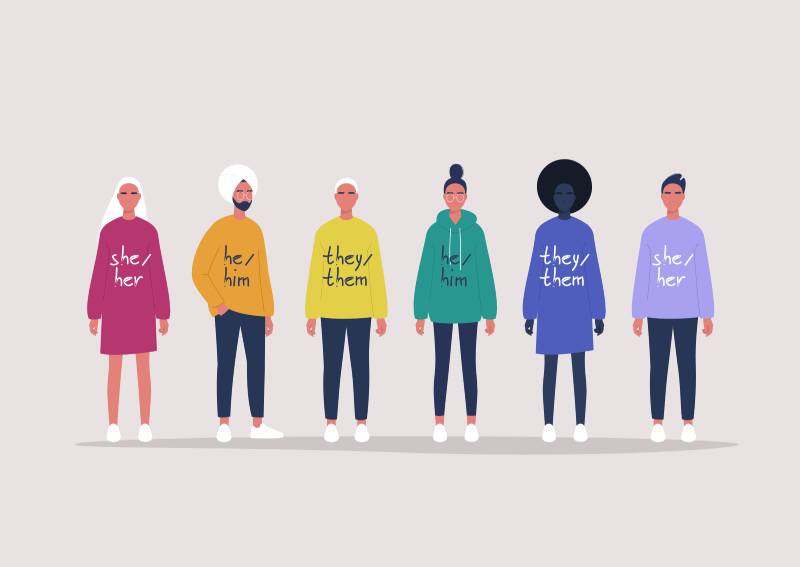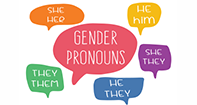Change Avatar
Gender Pronouns
Gender Pronouns
Gender pronouns are a specific type of pronoun chosen by someone for you to use to reflect them within conversation.
What Are Gender Pronouns?
Gender identity is a complex concept and best left for a person to determine on their own. To be respectful, listen carefully for the pronouns used by a person and always ask a person which pronouns they prefer if it isn’t clear. In this instance, it’s less about hard-fast grammar rules and more about respect and honoring someone’s wishes to ensure they’re comfortable.
Gender pronouns are generally given in pairs, and here are some common examples:
| Masculine Singular | he/him/his |
|---|---|
| Feminine Singular | she/her/hers |
| Neutral Singular or Plural | Neutral |
| Neutral | ze/zir/zirs |
| Neutral | ze/hir/hirs |
| Reflexive neutral | zirself/zirselves hirself/hirselves |
What Do the Neutral Z Pronouns Represent?
Ze is pronounced like “zee” and is used to replace she/he/they. It can also be spelled zie or xe.
Hir is pronounced like “here” and is used to replace her/hers/him/his/they/theirs.
Here are some examples of usage:
Ze marched over and introduced zirself to the group.
Ze marched over and introduced hirself to the group.

How Do I Use Gender Pronouns in a Sentence?
Just like you would a regular pronoun, as a subject or an object to replace the person’s/persons’ name.
Here are some examples:
she/her/hers
Charlie bought her coffee early so she wouldn’t be late for work.
they/them/theirs
Xo wanted their shirt to match their car so they could represent their favorite team.
ze/hir/hirs
Tre went to hir house to pick up hir mail.
How Do I Know Which to Use?
Always listen or look for identification on their name tag or desk. If you’re unsure, just use gender-neutral pronouns when possible. If you’re in a small group setting, it can be appropriate to ask them directly if they seem comfortable.
Bottom line - Never assume.
When in doubt, just use they/them/theirs as neutral pronouns until you’re requested otherwise. And don’t assume that because someone else refers to a person one way that that is their preferred pronoun. It’s always best to ask them or look for an indication, such as a name tag or name plate, or on their social media or LinkedIn.
For example,
Someone may introduce themself in this way: “Hi, my name is Austin and my pronouns are they & them.” This means that, in conversation when referring to Austin, you would use they, them, their, etc. in place of a singular pronoun.
Or you could introduce yourself first by saying, “Hi, I’m Heather, and my pronouns are she/her/hers. What are yours?”
Or, once you’re comfortable and in a small group setting with someone, just ask them directly! If they don’t feel comfortable sharing, they won’t, so don’t be offended. But, when you ask, there are several ways to do it respectfully:
What are your pronouns?
Which pronouns do you use?
What pronouns should I use when referring to you?
Can you remind me which pronouns you use when referring to yourself?
How should I refer to you in conversations?
I don’t want to make any assumptions or be disrespectful, so could you please help me with your pronouns?
QUICK TIP!
Sometimes someone may prefer that you use their name only, in which case they might say, “Just use my name, please!” In that case, you don’t use any pronouns. It’s always about respect!
Example: Bren needed to get Bren’s hair cut for Bren’s job’s party.










